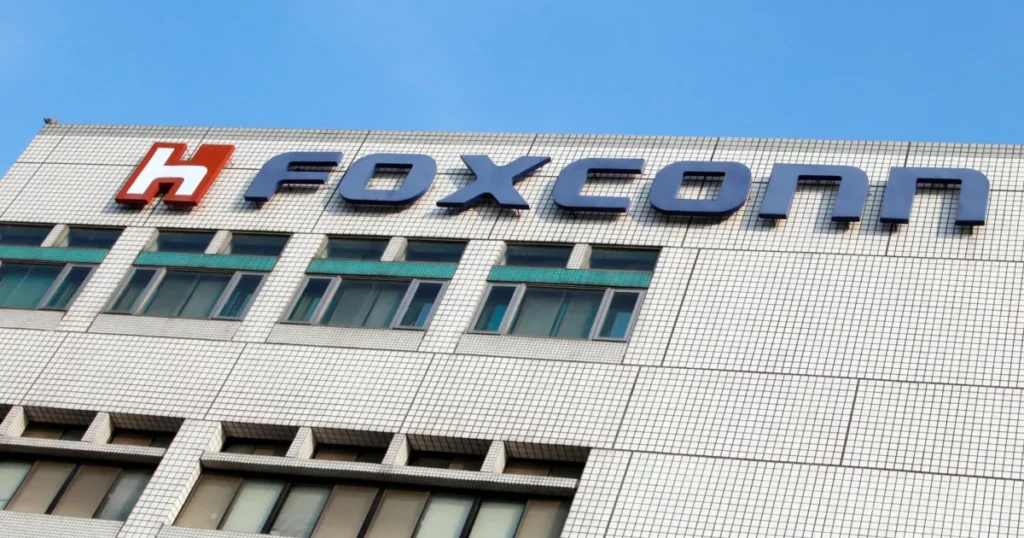
In recent months, Foxconn’s factories across China have been witnessing waves of mass layoffs and resignations. This has led to long lines of workers, clutching their luggage and accompanied by their families, painfully leaving the premises. In Zhengzhou, large crowds of employees have gathered along Factory Avenues to process their resignations. Videos circulating online show distressed workers standing in queues from morning until midday, highlighting the magnitude of the issue.
Social media discussions are abuzz with reports of widespread downsizing, with some speculating that Foxconn may leave China altogether. Footage shows Foxconn dormitories completely emptied, their rooms and windows abandoned. The once-bustling areas filled with street vendors and lively crowds now resemble ghost towns.
As the world’s largest electronics contract manufacturer, Foxconn operates factories worldwide, with its Chinese operations being particularly extensive. The company manages over 40 manufacturing hubs across regions like the Pearl River Delta, Yangtze River Delta, and Bohai Rim. Major facilities are located in Shenzhen, Zhengzhou, Tianjin, Qingdao, and Chongqing. However, by late 2024, social media platforms like Weibo and Zhihu were flooded with reports of massive layoffs across Foxconn facilities.
One employee, who has worked at Foxconn for nearly 17 years, explained why the focus often remains on the company. Foxconn strictly adheres to labour laws, ensuring salaries and contracts are issued according to regulations. Overtime is voluntary, overtime pay is calculated properly, and unused annual leave is converted into overtime pay. Salaries are paid on time, even during holidays.
In contrast, many domestic factories impose excessively long working hours, arbitrarily deduct wages, and exploit workers. For example, employees at Leap Motor had to fight for their unpaid wages and social insurance. On the other hand, companies like Honda, Tesla, and Toyota offer generous compensation packages during layoffs, paying as much as N plus three or N plus six. This stark difference in treatment has led to questions about who the real capitalists are.
Foxconn’s movements significantly impact the local economy and industrial environment. This year has been particularly bleak for labour intermediaries working with Foxconn. Brick-and-mortar stores have fewer customers, and the streets are noticeably less crowded. Many people have left, perhaps returning to their hometowns or seeking opportunities elsewhere. The economy feels stagnant, with large corporations laying off employees, small businesses closing, and many people unemployed.
Meanwhile, neighbouring countries are thriving. Japanese companies are posting record profits despite declining car sales in China. Toyota and Honda are excelling in global markets. South Korea’s exports, a barometer of global economic health, have grown for 10 consecutive months, and Seoul’s office occupancy rate is an impressive 98%. Vietnam, buoyed by massive investments from multinational giants, is flourishing. Samsung has invested over 160 billion yuan in Vietnam, while Apple has poured over 100 billion yuan into its supply chains there over the past five years, even planning an AI centre in Ho Chi Minh City.
Stock market of neighbouring country has skyrocketed, surpassing Hong Kong in total market value, making it the world’s fourth-largest economy. In stark contrast, foreign businesses are rapidly withdrawing from China, and people’s lives are becoming increasingly difficult. The prosperity of neighbouring countries highlights a stark reality: global industrial division is undergoing significant shifts and realignment.
Analysts suggest that Foxconn’s withdrawal is just the tip of the iceberg. Many Taiwanese and Western businesses now view China as an unstable environment for conducting normal business. In Suzhou, once a shining star of Chinese manufacturing, the situation is dire. Over 20,000 businesses in Suzhou have either closed or suspended operations, leading to soaring unemployment and a sharp economic downturn. Hundreds of thousands of migrant workers have been forced to leave.
This isn’t limited to Suzhou. Beijing, Shanghai, Guangzhou, and Shenzhen are facing similar challenges, with widespread business closures, halted operations, foreign capital withdrawals, and an exodus of migrant workers. China’s economy is being left behind in this era of global change. The mass layoffs and resignations at Foxconn are a clear indication of the broader challenges facing China’s economy. The once-thriving manufacturing hubs are now grappling with significant economic downturns, impacting both local and regional economies. As neighbouring countries continue to thrive and attract foreign investments, China must address the underlying issues that have led to this crisis. The shifting global industrial division and realignment highlight the need for China to adapt and find ways to stabilize its economy and retain its position in the global market.